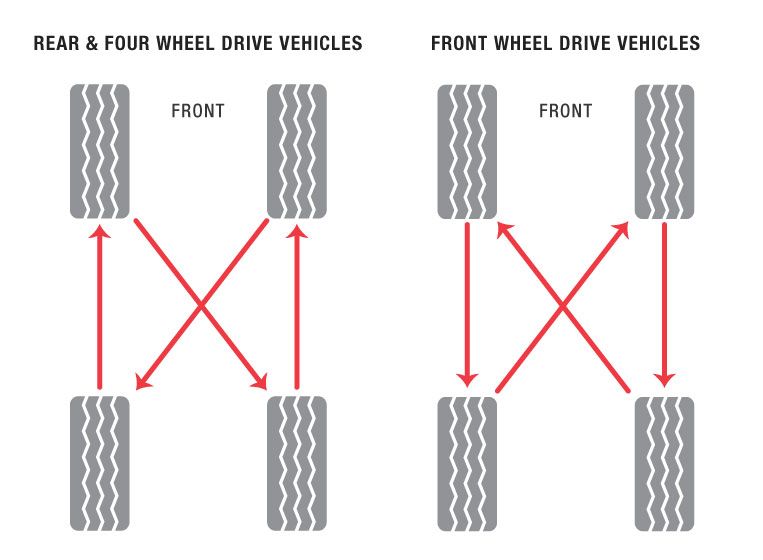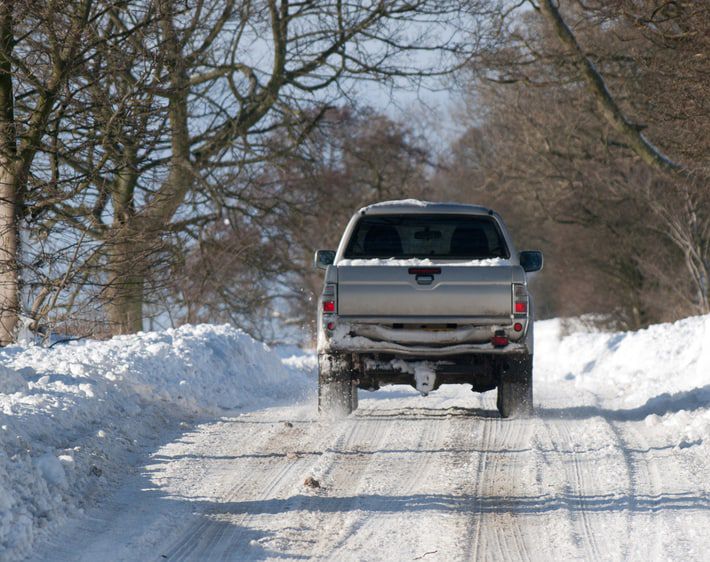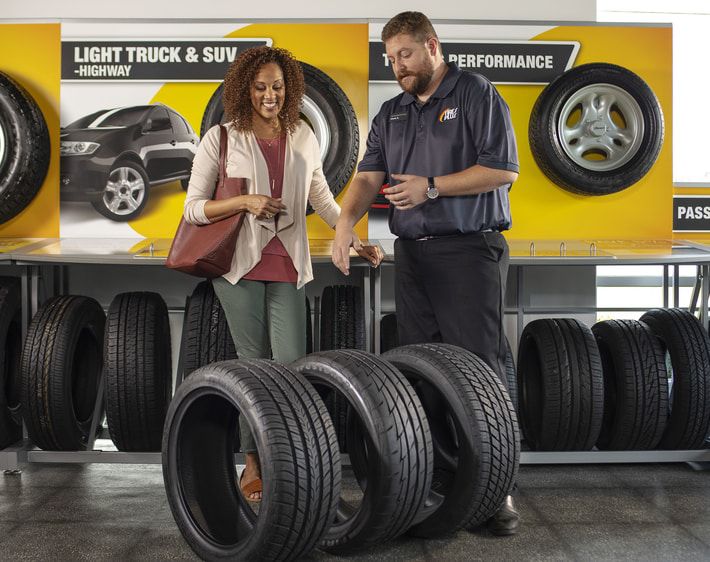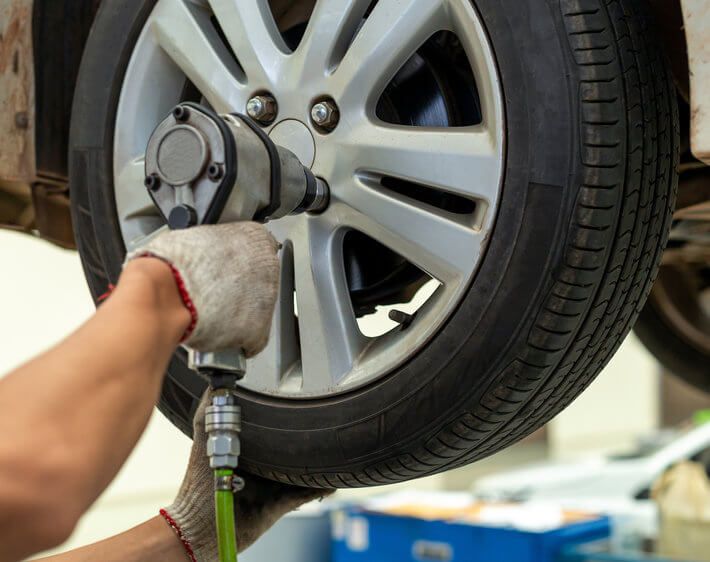Never skip leg day, never quit your dreams, and NEVER skip a tire rotation! Some of life's "nevers" seem pretty logical. If you're not sure if tire rotations are really necessary, you might be tempted to skip your next one. But before you cancel that service appointment, learn what could happen if you don't rotate your tires!
What Is Tire Rotation?
Tire rotation may be the most neglected of all routine maintenance tasks, but what is it? And why do vehicle manufacturers recommend it?
Tire rotation is a way of managing tire tread wear — the grating, scouring, and scraping that happens to your tires' tread while carrying your vehicle over roads and rough surfaces. During a tire rotation, each tire is moved to a different position on your car’s axles, like moving the front right tire to the back left position, for example. This shuffle helps your tires wear more evenly!
Refer to your owner's manual or consult with your local auto care experts to understand how often you should rotate your tires. Most vehicle manufacturers recommend that you get your tires rotated about every 7,500 miles or six months.
Why Should I Rotate My Tires?
When you follow your vehicle's manufacturer-recommended tire rotation intervals, you are supporting even tread wear, which helps improve handling, reduce noise and vibration, extend the life of the tire, and protect your tire warranty. Not only do these things save you from needing new tires sooner, they can also provide a better driving experience!
What If I Don't Rotate My Tires?
Without regular rotations, tire treads can wear down unevenly to create a rough and potentially unstable driving surface. In the end, this type of tire tread wear may decrease your safety on the road – think heat buildup, hydroplaning, poor traction in snow and ice, and an increased risk of punctures and blowouts.
According to an NHTSA report, inadequate tread depth is responsible for more than 25% of all tire-related car accidents. Additionally, Consumer Reports found that up to 50% of all passenger vehicles currently on the road have at least one tire with insufficient tread.
Heat Buildup
When your car is moving, the friction created between the tires and the road generates heat. Tires are designed to withstand heat, but without the space for the cooling airflow that treads create, the temperatures can quickly reach unsafe levels. Too much heat can cause tire failures, such as blowouts and tread separation.
Hydroplaning
The deep grooves in healthy tread help channel water away from the driving surface, so the tire can maintain a firm grip on the road. Without adequate tread depth, tires can skim across the top of the water, dangerously compromising steering, control, and handling.
Poor Traction in Snow and Ice
With deeper, wider, sharper, and more irregular treads, snow tires are designed to improve traction by gripping into packed snow. Driving in winter conditions with insufficient tread depths (or inadequate tires) may increase the risk of spinning out or sliding around on icy roads.
Punctures and Blowouts
If you don't rotate your tires, a spot on a tire that is experiencing excessive strain could begin to wear thin. The thinner the spot gets, the higher the chance that a nail, glass, or even a sharp rock could poke a hole in the tire. After all, tires — like chains — are only as strong as their weakest point.
The benefits of regular tire rotation far outweigh the risks of not getting it done. While skipping it could cost you dearly, you could get your next tire rotation service for free! Call or visit your local Tires Plus and find out if your tires qualify.




